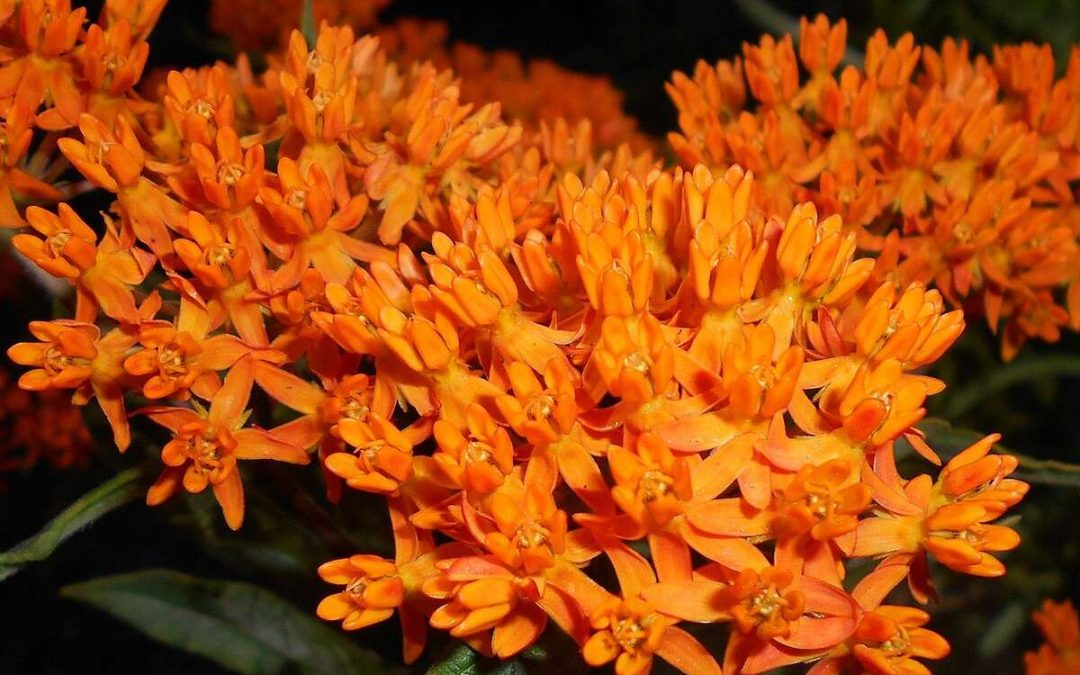St. Louis is home to some of the most vibrant plant life Mother Nature has to offer. You can create beautiful scenery around your home by embracing this and using native plants to add a unique pop to your St. Louis property.
In this article:
- Why Should You Add Native Plants to Your Landscape?
- Best Native Plants For St. Louis
- Prairie Dropseed (Sporobolus Heterolepis)
- Pink Turtlehead (Chelone Lyonii)
- Eastern Redbud (Cersis Canadensis)
- Zigzag Goldenrod (Solidago Flexicaulis)
- Purple Coneflower (Echinacea Purpurea)
- Spicebush (Lindera Benzoin)
- Butterfly Milkweed (Asclepias Tuberosa)
- Blazing Star (Liatris Spicata)
- Pawpaw (Asimina Triloba)
- Cardinal Flower (Lobelia Cardinalis)
- How To Choose the Best Native Plants For St. Louis
Why Should You Add Native Plants to Your Landscape?
You have a spectacular number of plant and flower choices when creating and curating your garden. Yet, the benefits of selecting native plants are undeniable. They have breathtaking beauty that can complement any home, even deep in the heart of the city.
Native plants have evolved with the wildlife, geology, and climate of the St. Louis area for thousands of years, so they are already well adapted to their surroundings. A large part of landscape care involves getting your plants used to the area in which you’ve planted them. With native plants, you don’t have to worry as much about adapting your garden to the local climate or soil composition.
Because native plants don’t require the same amount of irrigation, pesticides, or fertilizer as non-native plants, they allow you to focus more on other aspects of your landscaping. And you can save money in the long run by cutting down on the number of gardening supplies you need.
Best Native Plants For a St. Louis Landscape
If you’ve decided to fill your garden with native plants, you may be wondering which plants to choose. Here are ten great selections to help get you started.
1. Prairie Dropseed (Sporobolus Heterolepis)
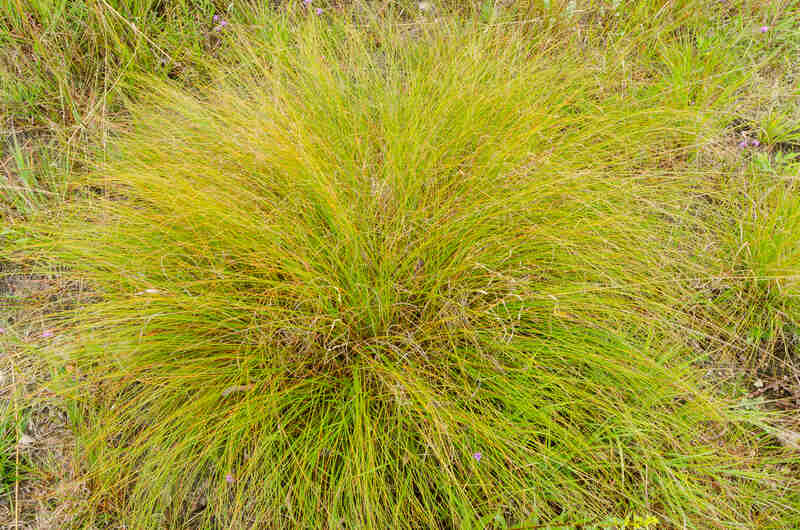
Photo Credit: Joshua Mayer / Flickr / CC BY-SA 2.0
Prairie dropseed is a perennial ornamental grass. Its finely textured leaves curve outward to form large tufts in a pattern reminiscent of some desert plants. They are pale green in the summer, and in fall they turn a golden-orange shade that fades to bronze in the winter.
Though prairie dropseed grow slowly, it requires little water once established. You can easily grow prairie dropseed in dry, sandy soil thanks to its high drought tolerance. It does enjoy large amounts of sun, however, so keep it as far in the open as possible.
Plant type: Grass
Sun needs: Full sun
Water needs: Low
Soil preferences: Sandy, rocky, clay
Duration: Perennial
Mature height: 2-3 feet
2. Pink Turtlehead (Chelone Lyonii)
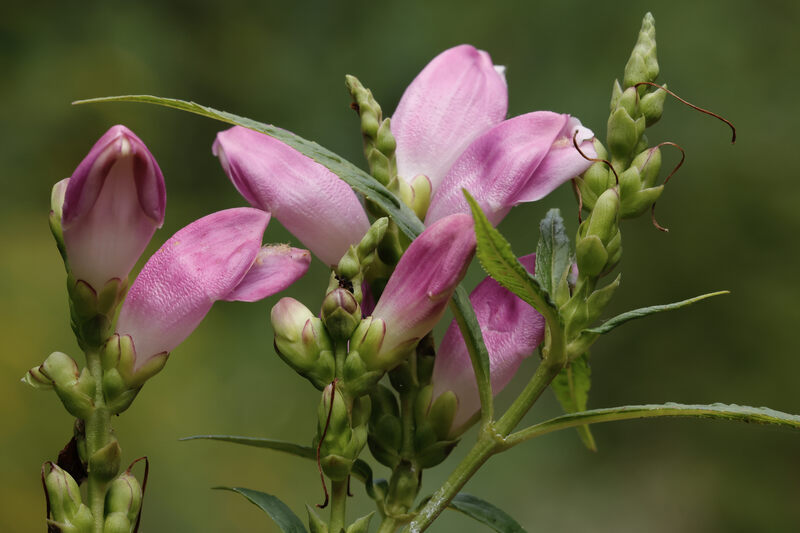
Photo Credit: Lydia Faravel / Flickr / CC BY 2.0
Sometimes called ‘Rose Turtlehead’, the pink turtlehead is a tall Missouri wildflower with a neat and tight clumping habit. It gets its name from the rosy, two-lipped flowers that resemble an open-mouthed turtle’s head. It’s common name honors the early 19th century botanist John Lyons.
This native perennial blooms between late summer and early fall. It best thrives in cooler climates with mild summers and moist soil. Aside from looking beautiful, the pink turtlehead’s bright color is also great for attracting bees and butterflies to your garden.
Pink turtlehead possesses a high shade tolerance. However, growing it in too much shade may result in drooping stems that require support from a sturdier species.
Plant type: Wildflower
Sun: Full sun, partial sun
Water needs: High
Soil preferences: Clay, loamy, sandy, rich, moist
Duration: Perennial
Mature height: 1.5-6.5 feet
3. Eastern Redbud (Cersis Canadensis)
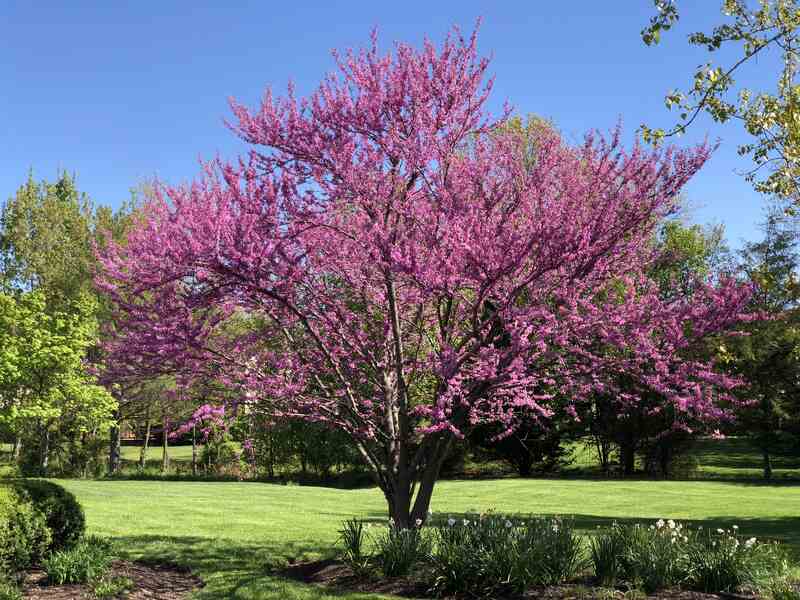
Photo Credit: Famartin / Wikimedia Commons / CC BY-SA 3.0
The eastern redbud is a very popular deciduous, multi-trunked tree that brightens any landscape with vibrant pink and purple blooms. These pea-shaped flowers blossom on the bare branches for two weeks in the early spring before the foliage develops.
You can easily grow eastern redbud in well-drained moderately furtile soil. However, the pH balance of the soil doesn’t matter much as long as its not moist.
Eastern redbud is the perfect tree for homeowners who want low maintenance plants in their landscape. Awarded a place among the Missouri Botanical Garden’s Plants of Merit, it can grow as much as 30 feet tall with a large spread that will provide a gorgeous spot of shade on your property.
Plant type: Tree
Sun: Partial sun, shade
Water needs: Dry
Soil preferences: Dry, moist
Duration: Perennial
Mature height: 20-35 feet
4. Zigzag Goldenrod (Solidago Flexicaulis)
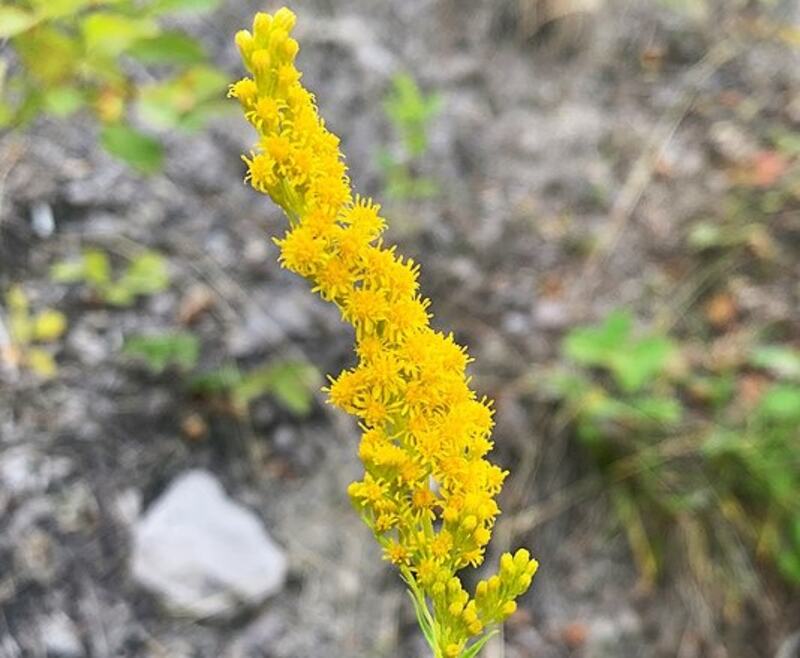
Photo Credit: Dseiver / Wikimedia Commons / CC BY-SA 4.0
The zigzag goldenrod is a perennial that is native to the woodlands of Missouri. It’s a great choice if you’re looking for a wildflower that can survive in the shade.
Zigzag goldenrod gets its name from its two distinct characteristics, which are its wavy stems and powdery yellow flowers. Its flowers tend to attract bees and butterflies with their vibrant color.
You can typically grow zigzag goldenrod between July and September for a pop of color in your garden late in the summer.
Plant type: Flower
Sun: Full sun to full shade. (Prefers partial shade.)
Water needs: Moderate
Soil preferences: Average, well-drained
Duration: Perennial
Mature height: 1-3 feet tall
5. Purple Coneflower (Echinacea Purpurea)
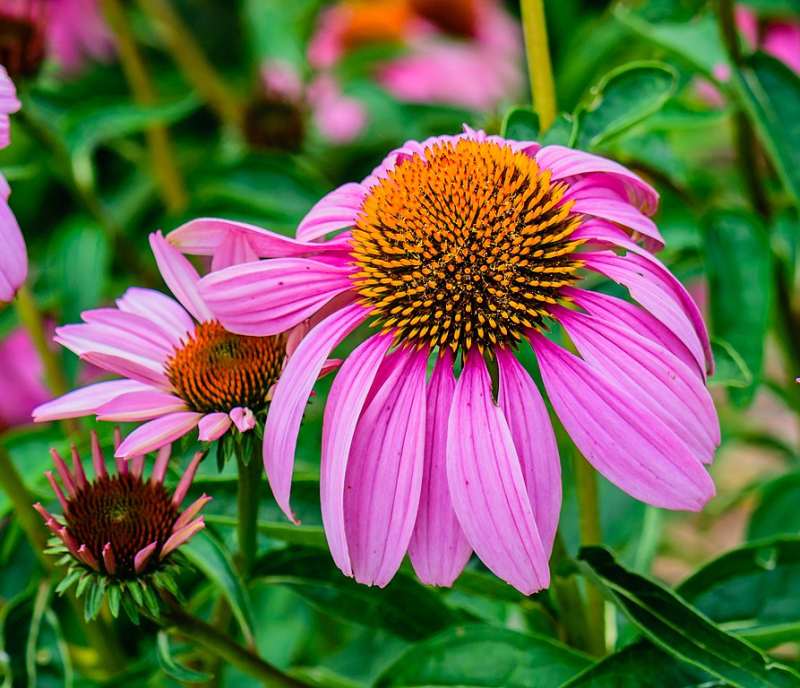
Photo Credit: PumpkinSky / Wikimedia Commons / CC BY-SA 4.0
If you want a highly adaptable plant that can tolerate a variety of adverse conditions, the purple coneflower is an excellent choice. This perennial can tolerate dry to medium well-drained soil as long as it gets plenty of sunlight.
Typically grown during the summer months, the purple coneflower is a popular spot for insects and hummingbirds. In addition, this pink-purple daisy-like species makes a lovely bocquet as a cut flower.
Because it is native to many prairies and meadows heat, humidity, and even drought are no obstacles for the purple coneflower. It is, however, susceptible to aster yellows disease and leaf spot, so be on the lookout for these issues.
Plant type: Flower
Sun: Full sun or partial shade. (Does best in full sun.)
Water needs: Medium
Soil preferences: Average, well-drained
Duration: Perennial
Mature height: 2-5 feet tall
6. Spicebush (Lindera Benzoin)
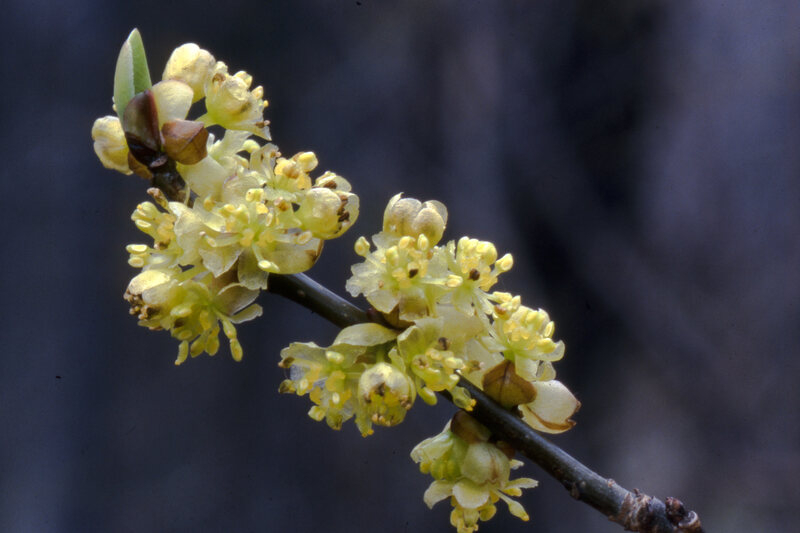
Photo Credit: NatureServe / Flickr / CC BY 2.0
The spicebush does more than serve as a lovely and aromatic accent piece to any garden. This deciduous shrub also grows fragrant leaves that are essential to the ecosystem. Larval caterpillars feed on these leaves and eventually evolve into the swallowtail butterfly, one of the rarest butterfly species.
Male and female varieties of these plants both develop clusters of greenish-yellow flowers, with the male flowers being larger. However, the female spicebush can develop a small red fruit with the help of a male pollinator.
You can grow the spicebush in full sun or shade. But a spicebush in the shade doesn’t grow flowers as vibrant as one grown in full sunlight.
Plant type: Shrub
Sun: Full sun, partial shade, full shade
Water needs: Medium
Soil preferences: Sandy, loamy, limestone-based
Duration: Perennial
Mature height: 6-12 feet
7. Butterfly Milkweed (Asclepias Tuberosa)
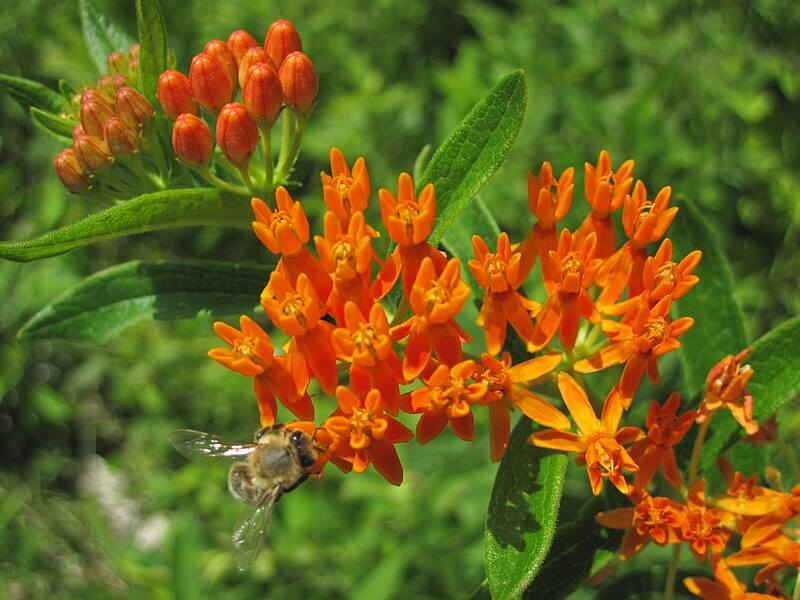
Photo Credit: James St. John / Wikimedia Commons / CC BY 2.0
The butterfly milkweed is a tuberous perennial that gets its name from the attractive nectar it produces. Butterflies and their larvae are easily drawn to these clusters of bright orange-yellow flowers.
You can expect the butterfly milkweed to bloom from early June through August, lending their lovely color to any St. Louis summer garden early to mid-summer.
Plant type: Flower
Sun: Full sun
Water needs: Medium
Soil preferences: Can tolerate poor soil but must be well-drained
Duration: Perennial
Mature height: 1-2.5 feet tall
8. Blazing Star (Liatris Spicata)
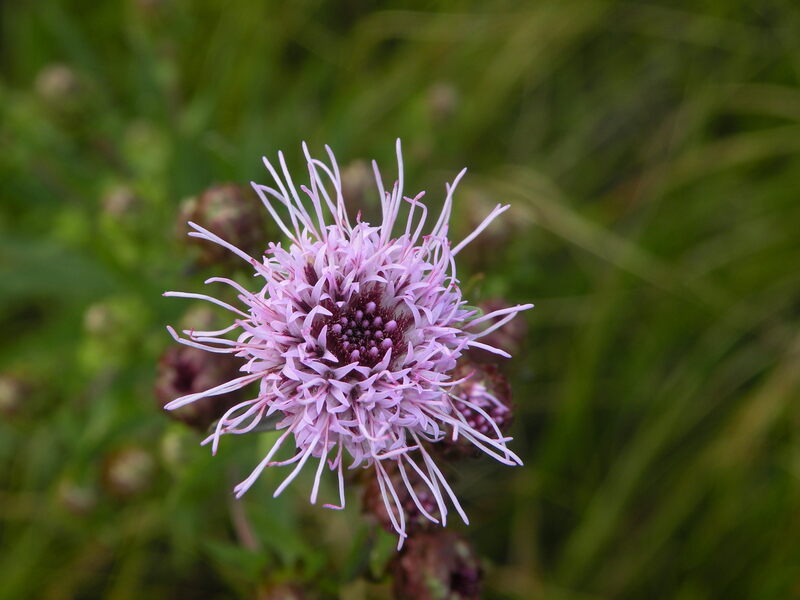
Photo Credit: Doug McGrady / Flickr / CC BY 2.0
The blazing star is native to St. Louis and has a unique appearance. Its deep purple flower heads are shaped like stars and form a tight cluster around a long stem to mimic an upright bottle brush.
These prairie flowers love full sun, so be sure to plant them in an area where they’ll receive as much exposure as possible. Other than the sunlight requirement, blazing star is a low-maintenance flower that helps any garden stand out.
Plant type: Flower
Sun: Full sun
Water needs: Keep soil dry or moderately moist
Soil preferences: Average, well-drained
Duration: Perennial
Mature height: 2-5 feet tall
9. Pawpaw (Asimina Triloba)
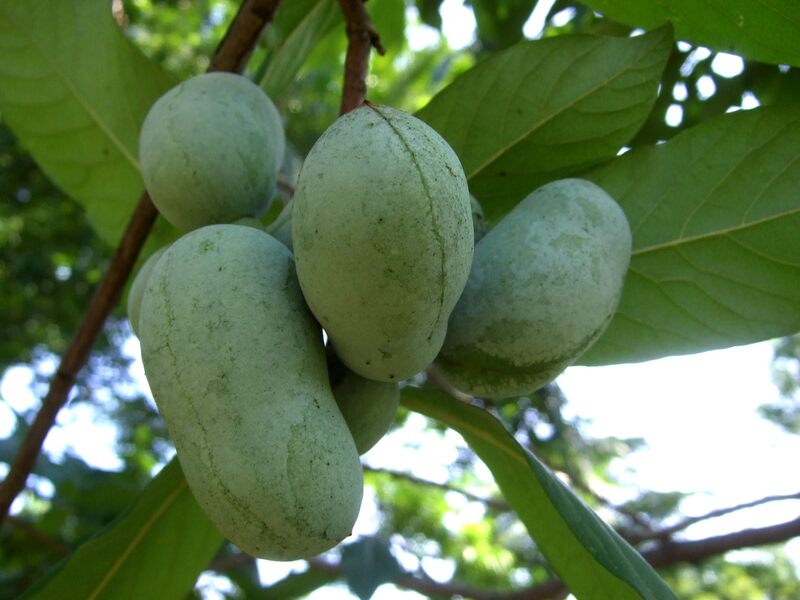
Photo Credit: Wendell Smith / Flickr / CC BY 2.0
This native of Missouri is typically classified as a tree, though it more resembles a small shrub. The pawpaw has large, drooping leaves that retain their bright green color into the late fall before turning yellow.
The most distinctive feature of the pawpaw is its purple flowers, which bloom in spring. They then become oblong yellow-green fruits that mature to a deep brown in the fall. These fruits have a consistency and flavor comparable to bananas, and they work well in ice creams and pies.
Plant type: Tree
Sun: Full sun to partial shade; prefers full sun
Water needs: Keep soil moderately moist to wet but well-drained
Soil preferences: Tolerates average soil; prefers fertile, acidic soils
Duration: Perennial
Mature height: 15-30 feet
10. Cardinal Flower (Lobelia Cardinalis)
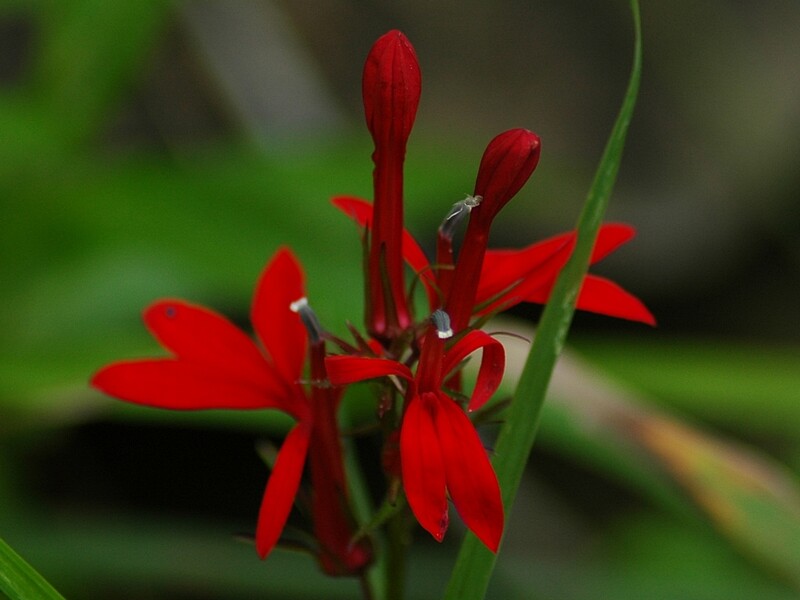
Photo Credit: linnaeus / Wikimedia Commons / CC BY-SA 3.0
The cardinal flower’s large, bright red petals add a dramatic pop to any landscape the native perennial finds itself adorning. Some of these petals stick straight up, giving the flower a spiky appearance that stands out well among most other flora.
You get the best results in a slightly shady garden that attracts the attention of pollinators like hummingbirds. The cardinal flower loves moist soil, which makes it a great choice for a rain garden.
Plant type: Flower
Sun: Full sun, partial shade, full shade
Water needs: Medium to high
Soil preferences: Sand, loam, clay, limestone-based
Duration: Perennial
Mature height: 1-6 feet
How To Choose the Best Native Plants For Your St. Louis Landscape
If you have an interest in filling your garden with some of the gorgeous native plants of St. Louis, here are some resources to help you learn more:
- Missouri Botanical Garden: A great place to see some of the native plants of St. Louis on display in their natural habitat.
- Grow Native: This website serves as an educational hub for the Missouri Prairie Foundation to encourage biodiversity and conservation. In addition, they work to connect people with local professionals who provide services related to native plants.
- St. Louis Audubon Society: This organization gathers and distributes information about local birdlife, including the essential pollinators that many native St. Louis plants need. Through their Bring Conservation Home program, they will even provide a conservationist to consult about turning your landscape into a habitat for local wildlife.
Native plants add a lot of convenience to gardening while allowing you to explore the beauty of nature. And the selection of native plants you can add to your garden is vast. If you would like assistance with choosing flora for your St. Louis property, talk to a local professional.
Main Image Credit: Butterfly Milkweed / Salicyna / Wikimedia Commons / CC BY-SA 4.0

